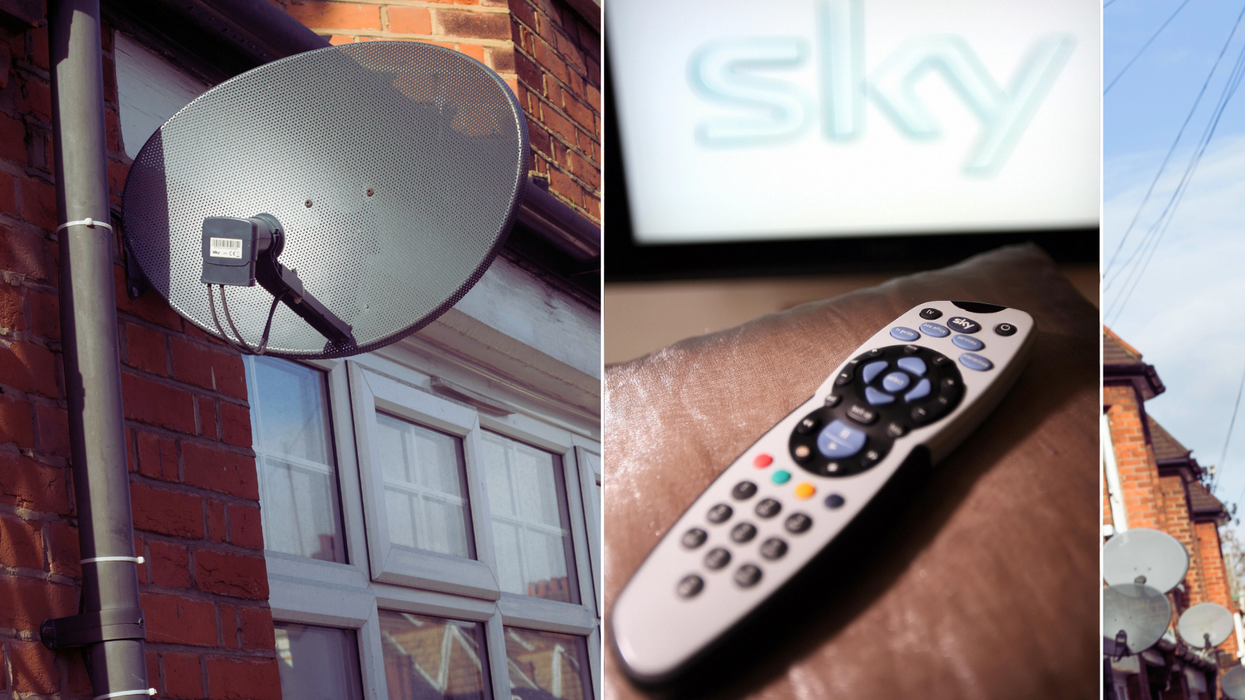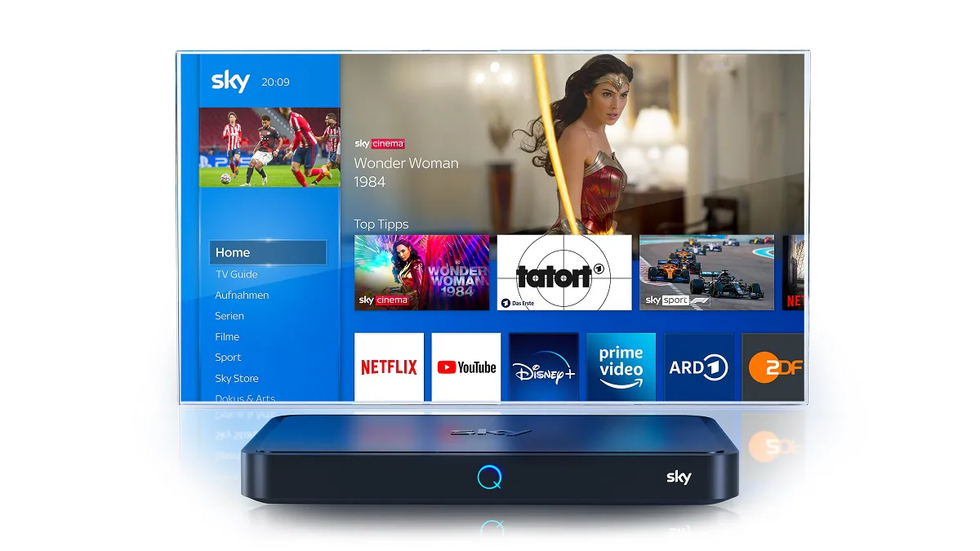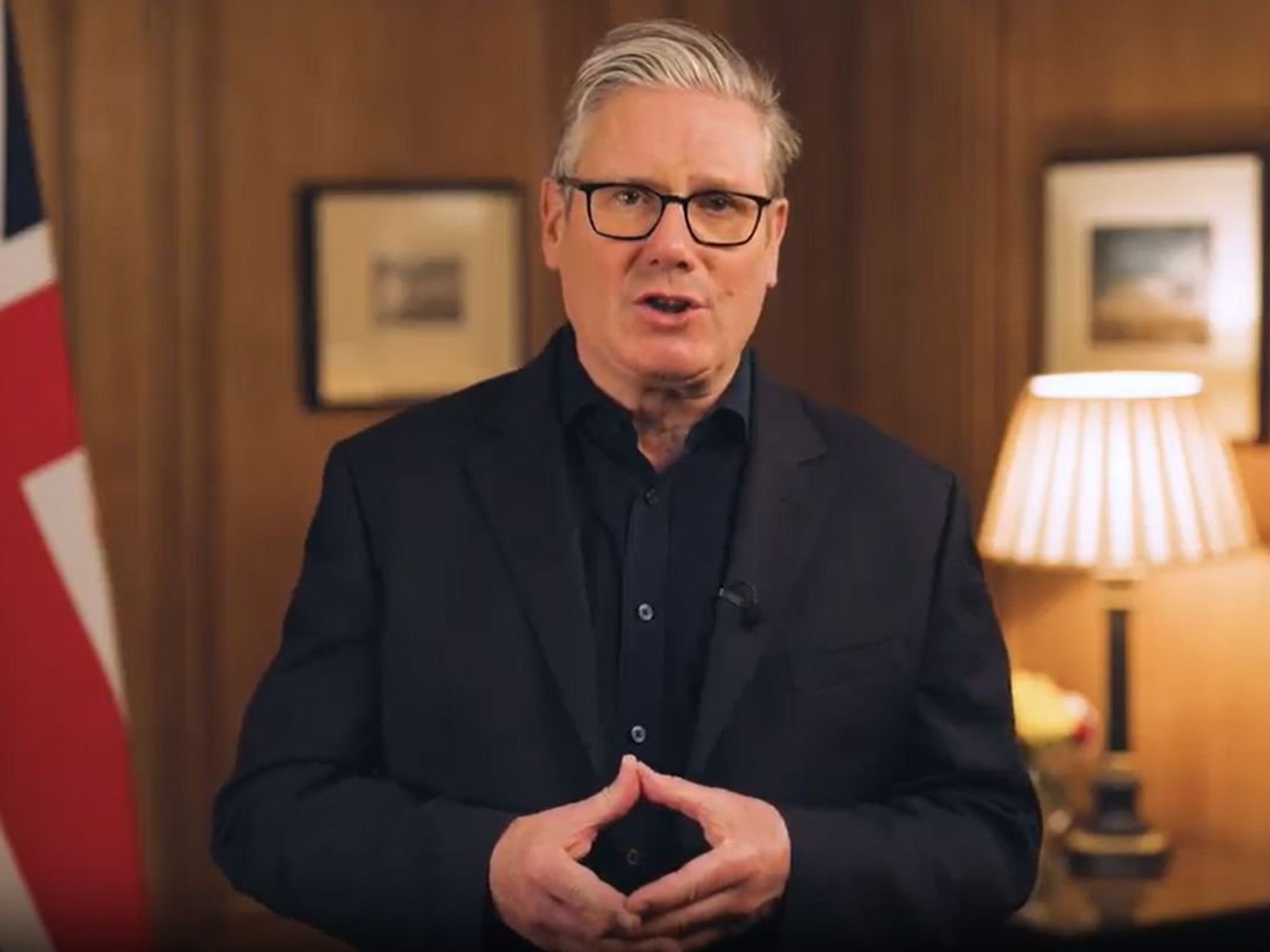End of the satellite dish? Sky Q being slowly phased out as Sky prioritises streaming in latest job cuts

All products are independently selected by our experts. To help us provide free impartial advice, we will earn an affiliate commission if you buy something. Click here to learn more
|GETTY IMAGES | GBN

Sky is cutting 1,000 roles across the company, with satellite engineering set to be one of the biggest departments hit
- Sky Q is the only product available to buy from Sky that relies on a satellite dish
- It requires trained engineers to visit your home to set everything up
- Sky Glass and Sky Stream both offer access to Sky TV via broadband
- These options can be set-up by anyone, since you only need to connect Wi-Fi
- UK viewers increasingly choose Glass and Stream over Sky Q
Don't Miss
Most Read
Sky has made a decisive move away from its satellite dish-based Sky Q box as it embraces streaming with the announcement of 1,000 job cuts. A significant slice of these cuts will be felt in the satellite engineering department, sources have told LBC.
The latest cuts represent roughly 4% of the total workforce at Sky, which is owned by American broadcasting giant Comcast, which also counts DreamWorks and Universal Pictures in its portfolio.
Sky Q is the only set-top box still sold by Sky that requires a satellite dish.
First revealed in 2015, Sky Q was a direct successor to the immensely popular Sky+ HD and introduced features like 4K Ultra HD, voice controls, and video on-demand apps like BBC iPlayer, Spotify, and Netflix.
Since then, Sky has launched Sky Glass and Sky Stream, which both scrap the satellite dish in favour of a wireless or wired broadband connection. Live channels and on-demand content is streamed to the device, with an aerial only needed as a back-up in case you suffer an internet outage.

Sky Q arrives with a 1TB hard drive capable of storing hours of television to keep forever. It also has enough tuners built-in to record up to six channels at the same time, something that set it apart from Sky+ HD, which it replaced in the lineup
| SKY PRESS OFFICEThe latest line-up from Sky has more in common with a streaming box from Roku or Amazon’s all-in-one flatscreen Fire TVs than the ageing Sky+ HD and Q boxes. The skyrocketing popularity of both Glass and Stream show viewers’ preferences shifting away from dishes towards streaming.
Sky Glass was the UK’s best-selling television model throughout 2023, Sky says.
With customers turning their backs on traditional satellite television, Sky is dropping a number of roles within its satellite engineering department as part of the latest round of cuts.
Don’t panic — Sky Q won’t be going anyway anytime soon, with the company actively taking new orders for the set-top box. For people living in rural areas with poor broadband connections, Q remains the best way to watch exclusive shows, sports, and movies from the broadcaster.
And while it's no longer available to buy, Sky does still support customers who use its Sky+ HD box. Although, it might be worth checking to make sure that you're not missing out on a better deal by switching to newer hardware. For example, you won't be able to access all on-demand content from broadcasters like the BBC, ITV, and most recently, Channel 4, without the modern apps on Q.
It’s also the only hardware sold by Sky that still includes a physical hard drive for your recordings. Glass and Stream rely on catch-up services like BBC iPlayer, ITVX, My5 and others for programmes that you’ve marked in the TV Guide to watch another time. That means you’ll be subject to the expiry date of these services, so you’ll never be able to catch up on multiple episodes of Match Of The Day after a holiday with these new streaming-focused solutions from Sky, for example.
However, one glance at the Sky website will tell you which way the wind is blowing.
Until late 2022, Sky would actively promote Sky Stream and Sky Q across its website. There would also be several bundles with Sky Cinema and Sky Sports promoted front-and-centre on the store.
That’s no longer the case, with only a single listing for Sky Q under the TV tab of the website. At £31 per month compared to the £25 per month to watch the same channels via Sky Stream, it’s unlikely to appeal to anyone other than those who can only watch via satellite.
In a statement about the latest cuts, a spokesperson for Sky said: “The launch of Sky Glass and Sky Stream represents a shift in our business to deliver TV over IP (Internet Protocol) rather than satellite. Customers are choosing Sky Glass and Sky Stream which don’t require specialist installation, leading us to change the number of roles needed to deliver our services.”
Since Sky Glass and Sky Stream only require an internet connection, there’s no need to book an appointment with a specialist engineer to get everything up and running ―unlike Sky Q. With more customers choosing broadband-powered products, it follows that satellite dish installations will be dropping, which explains why Sky is choosing to reduce the number of engineers on staff.
Sky isn’t the only company with a focus on broadband-powered telly. Last year, EE announced a partnership with Apple to bring live television to the Apple TV 4K via an EE TV app and custom-designed remote. TalkTalk broadband customers can bundle a set-top box with access to Freeview channels as well as Sky TV content via a deal with NOW, formerly NOW TV.
Virgin Media customers can opt for its TV 360, which uses traditional cable TV to connect viewers to hundreds of channels. However, it also offers the Virgin Stream box, which is much closer to Sky Stream and Apple TV, offering access to the most popular apps.
LATEST DEVELOPMENTS
- Sky confirms price rise for millions of TV and broadband users from April
- Channel 4 shutting down 5 channels across Freeview, Freesat and Sky TV
- Final warning for viewers who lost access to BBC channels last month
- Prime Video now has adverts unless you pay extra, and people are furious
And finally, Everyone TV (the team behind Freeview and Freesat) has confirmed that it'll launch its follow-up, dubbed Freely, in the coming months. This will offer a Freeview-like experience over a wireless or wired internet connection for the first time.
You’ll be able to restart a show at the touch of a button ― no matter when you tune in. Freely will be coming to TVs built by Hisense and Vestel soon, with more partnerships set to be announced. Unlike the other options listed in this article, Freely will be free of charge, although you’ll need to make sure you’ve got a valid TV Licence to watch content from some providers.










